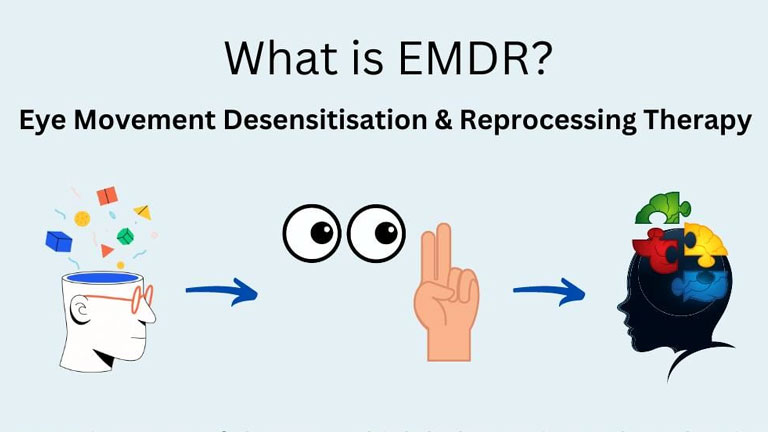
In the realm of trauma recovery and mental health treatment, Eye Movement Desensitization and Reprocessing (EMDR) has emerged as a powerful and evidence-based therapeutic approach. EMDR involves a structured eight-phase protocol that facilitates the processing of distressing memories and adverse life experiences, enabling clients to heal from trauma and related psychological challenges. While EMDR has proven highly effective on its own, there is growing recognition of the potential benefits of integrating this approach with other therapeutic modalities, particularly in the context of intensives.
The primary objective of this article is to explore the integration of EMDR with other therapeutic approaches, including cognitive-behavioral therapy (CBT), mindfulness-based interventions, and somatic experiencing, within intensive therapy settings. EMDR intensives, characterized by extended and concentrated sessions, offer a unique opportunity to combine various treatment methods for a more comprehensive and tailored approach to trauma healing.
By examining how EMDR can synergistically interact with these complementary modalities, mental health professionals can expand their toolkits and enhance the efficacy of trauma treatment. This article delves into the potential advantages and challenges of integrating EMDR with other therapeutic approaches in intensive therapy, shedding light on the promising outcomes that emerge when these modalities work in tandem.
EMDR: A Brief Overview
Before delving into the integration of EMDR with other therapeutic modalities, it is essential to provide a concise overview of EMDR itself. Developed by Francine Shapiro in the late 1980s, EMDR is rooted in the belief that traumatic experiences can result in maladaptive information processing. These unprocessed memories contribute to distressing symptoms and emotional difficulties experienced by individuals with post-traumatic stress disorder (PTSD) and other trauma-related conditions.
The EMDR protocol follows eight phases that guide therapists and clients through the trauma-processing journey. The phases encompass history-taking, preparation, assessment, desensitization, installation, body scan, closure, and reevaluation. A hallmark feature of EMDR therapy is bilateral stimulation, which can be achieved through eye movements, auditory tones, or tactile taps. This bilateral stimulation mimics the rapid eye movements that naturally occur during the dream state (REM sleep) and appears to facilitate the adaptive processing of traumatic memories.
EMDR has garnered substantial empirical support, making it one of the leading evidence-based treatments for trauma and PTSD. Over the years, it has been successfully applied to a wide range of psychological issues, including phobias, anxiety disorders, depression, and grief. As a structured and time-limited therapy, EMDR has demonstrated efficiency and efficacy, making it suitable for both individual and group settings.
Now that we have established the foundations of EMDR, the subsequent sections will explore the integration of this powerful approach with other therapeutic modalities within intensive therapy contexts. By doing so, we can better understand the potential benefits and the transformative possibilities that await clients and therapists alike.
The Rationale for Integrating Therapeutic Approaches
While eye movement desensitization and reprocessing have proven to be highly effective in treating trauma and related conditions, there are certain limitations to using it as a standalone approach in some cases. Individuals with complex trauma or those presenting with co-occurring disorders may require a more comprehensive treatment approach that addresses various aspects of their psychological well-being. Integrating EMDR with other therapeutic modalities offers a rationale for bridging these gaps and providing a more holistic and tailored healing process.
Complementary Nature of Therapeutic Approaches: Each therapeutic modality, such as cognitive-behavioral therapy (CBT), mindfulness-based interventions, and somatic experiencing, brings unique strengths and focuses on different aspects of healing. CBT, for instance, targets negative thought patterns and maladaptive behaviors, while mindfulness emphasizes present-moment awareness and acceptance. By integrating these approaches with EMDR, therapists can address the cognitive, emotional, and physiological dimensions of trauma, fostering a more comprehensive and well-rounded healing experience.
Enhanced Treatment Outcomes: The integration of multiple therapeutic modalities in an intensive setting can lead to enhanced treatment outcomes compared to standalone EMDR therapy. By leveraging the strengths of each approach, clients may experience deeper healing and gain a broader set of coping skills to manage distress and triggers effectively. This comprehensive approach has the potential to create lasting positive changes and empower individuals to cope with challenges beyond the intensive therapy period.
Cognitive-Behavioral Therapy (CBT) and EMDR Integration
Cognitive-Behavioral Therapy (CBT) is a widely recognized and empirically supported therapeutic approach that focuses on identifying and modifying negative thought patterns and behaviors that contribute to distress. Integrating CBT with EMDR within intensives can offer several advantages:
Addressing Cognitive Distortions: Trauma survivors often develop cognitive distortions, such as guilt, shame, or irrational beliefs about the world and themselves. Integrating CBT techniques with EMDR allows therapists to target these cognitive distortions, promoting healthier thought patterns and self-perceptions.
Building Coping Skills: CBT equips individuals with practical coping skills to manage anxiety, stress, and triggers effectively. When integrated with EMDR, clients can develop a broader range of coping strategies to apply both during and after the intensive therapy period.
Facilitating Emotional Regulation: CBT techniques, such as cognitive restructuring and emotion regulation, can complement EMDR’s focus on processing traumatic memories. Clients learn to manage intense emotions and maintain emotional balance, enhancing the effectiveness of trauma processing.
Preventing Relapse: By addressing maladaptive behaviors and cognitive patterns that contribute to distress, the integration of CBT and EMDR may reduce the risk of relapse and strengthen the sustainability of treatment outcomes over time.
Research and case studies support the integration of CBT with EMDR, demonstrating the positive impact of this combined approach on treatment efficacy. As mental health professionals continue exploring innovative ways to optimize trauma healing, integrating CBT with EMDR in intensive therapy settings holds significant promise for promoting resilience and recovery in trauma survivors.
Mindfulness-Based Interventions and EMDR Integration
Mindfulness-based interventions, rooted in ancient contemplative practices, have gained recognition in modern psychology for their ability to cultivate present-moment awareness and foster non-judgmental acceptance. When integrated with EMDR in intensive therapy settings, mindfulness can offer valuable contributions to the trauma-healing process:
Emotional Regulation and Grounding: Mindfulness practices help clients develop skills to stay present with their emotions without becoming overwhelmed. By incorporating mindfulness techniques alongside EMDR, individuals can strengthen their capacity for emotional regulation, reducing the likelihood of emotional flooding during trauma processing.
Reducing Avoidance and Resistance: Trauma survivors often develop avoidance patterns as a coping mechanism to shield themselves from distressing memories and emotions. Mindfulness practices encourage individuals to approach their experiences with an attitude of acceptance, fostering a gentle curiosity towards difficult emotions. By combining mindfulness with EMDR, clients may become more receptive to engaging with trauma processing, mitigating resistance.
Heightening Body Awareness: Mindfulness-based interventions emphasize somatic awareness, facilitating a deeper connection with bodily sensations. Integrating mindfulness practices with EMDR can help individuals notice and process physical sensations that may arise during trauma processing, enabling a more holistic resolution of trauma.
Enhancing Self-Compassion: Mindfulness cultivates self-compassion and self-kindness, which are vital qualities in trauma recovery. When integrated with EMDR, individuals may experience greater self-acceptance and understanding, promoting a more compassionate and healing inner dialogue.
Empirical evidence supports the use of mindfulness-based interventions in conjunction with EMDR, suggesting that this integration can lead to improved treatment outcomes and increased overall well-being. By incorporating mindfulness into intensive EMDR therapy, mental health professionals can empower clients to harness their inner resources and develop a more balanced and mindful approach to life.
Somatic Experiencing and EMDR Integration
Somatic Experiencing (SE) is an approach designed to address the physiological aspects of trauma and promote healing through body-based interventions. By combining SE with EMDR within intensive therapy settings, therapists can provide a more comprehensive and embodied healing experience:
Resolving Physical Tension and Arousal: Traumatic experiences often result in physical tension and arousal, which can persist long after the event has passed. Somatic Experiencing techniques offer tools to discharge this trapped energy, complementing EMDR’s focus on emotional processing and memory reprocessing.
Tracking Sensations during EMDR: Integrating SE with EMDR can help individuals pay closer attention to bodily sensations that arise during trauma processing. By attending to somatic cues, clients and therapists can gain deeper insights into the body’s response to trauma, facilitating a more integrated healing process.
Facilitating a Sense of Safety: Somatic Experiencing emphasizes the importance of creating a sense of safety and groundedness. In EMDR intensives, integrating SE techniques can help clients establish a greater sense of safety within themselves and the therapeutic environment, promoting trust and openness during trauma processing.
Supporting the Window of Tolerance: The integration of Somatic Experiencing and EMDR aims to keep clients within their “window of tolerance,” the optimal range of emotional arousal where trauma processing can occur effectively. By incorporating SE tools, therapists can ensure that clients do not become overwhelmed during intensive sessions.
Research on the integration of Somatic Experiencing with EMDR is still emerging, but anecdotal evidence and clinical observations suggest promising results. By attending to the physiological manifestations of trauma and combining SE’s somatic focus with EMDR’s trauma processing capabilities, mental health professionals can offer a more embodied and comprehensive healing experience for trauma survivors.
The Synergistic Effects of Integration
The integration of EMDR with other therapeutic approaches, such as cognitive-behavioral therapy (CBT), mindfulness-based interventions, and somatic experiencing, creates a dynamic synergy that enhances the overall effectiveness of trauma treatment in intensive therapy settings. The combination of these modalities addresses various dimensions of trauma healing, providing clients with a more comprehensive toolkit to navigate their recovery journey. The following are some of the synergistic effects observed when integrating these therapeutic approaches:
Multi-Faceted Healing: The integration of diverse therapeutic modalities allows for a multi-faceted approach to trauma healing. EMDR’s trauma processing targets distressing memories, while CBT addresses negative thought patterns and behaviors, mindfulness-based interventions cultivate present-moment awareness and acceptance, and somatic experiencing focuses on body-based resolution. The harmonious interplay of these approaches creates a well-rounded healing experience that supports clients on emotional, cognitive, and somatic levels.
Targeting Complex Trauma: Complex trauma, resulting from repeated and prolonged exposure to adversity, can be particularly challenging to address with a single therapeutic approach. Integrating EMDR with other modalities provides a more nuanced and flexible approach to navigating the intricacies of complex trauma, allowing therapists to tailor treatment to each individual’s unique needs.
Strengthened Resilience: The combination of different therapeutic techniques enhances clients’ resilience by equipping them with a broader range of coping skills and resources. Clients may develop increased emotional regulation, better stress management, improved self-awareness, and enhanced self-compassion through the integration of these complementary approaches.
Deeper Insights and Awareness: Integrating mindfulness and somatic experiencing with EMDR allows clients to develop a deeper connection with their emotions, sensations, and inner experiences. This heightened awareness fosters a more profound understanding of the trauma’s impact and facilitates the processing of underlying emotional wounds.
Empowerment and Client Autonomy: The integration of multiple therapeutic modalities empowers clients to take an active role in their healing journey. By gaining a diverse set of skills, clients can play a more engaged and proactive role in their therapy, leading to increased agency and a sense of empowerment.
The integration of EMDR with other therapeutic modalities within intensive therapy settings holds immense promise for advancing trauma recovery and mental health treatment. By combining the strengths of cognitive-behavioral therapy (CBT), mindfulness-based interventions, and somatic experience with EMDR, mental health professionals can offer a more comprehensive and tailored healing experience to trauma survivors.
The rationale for integrating these approaches is firmly rooted in their complementary nature, each addressing different facets of trauma healing. Through this integration, clients can experience multi-dimensional and synergistic effects, improving treatment outcomes and sustained healing beyond the intensive therapy period.
As mental health practitioners continue to explore innovative ways to optimize trauma treatment, the integration of EMDR with other therapeutic modalities represents a significant step forward in providing transformative and empowering care for individuals on their path to recovery. By embracing this integrative approach and furthering research in this area, the mental health community can continue to elevate the standard of trauma care and pave the way for more resilient and flourishing lives for those affected by trauma.




